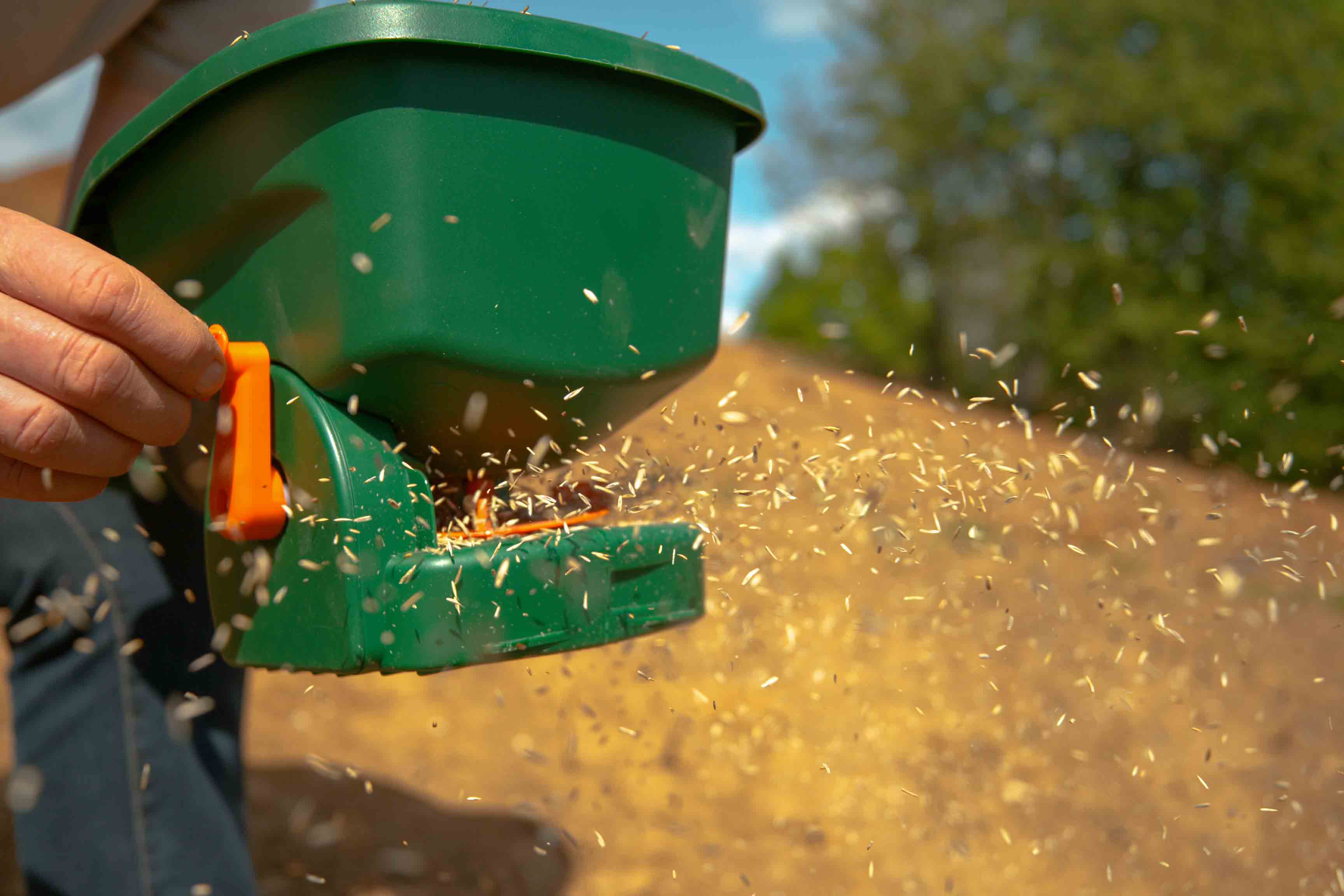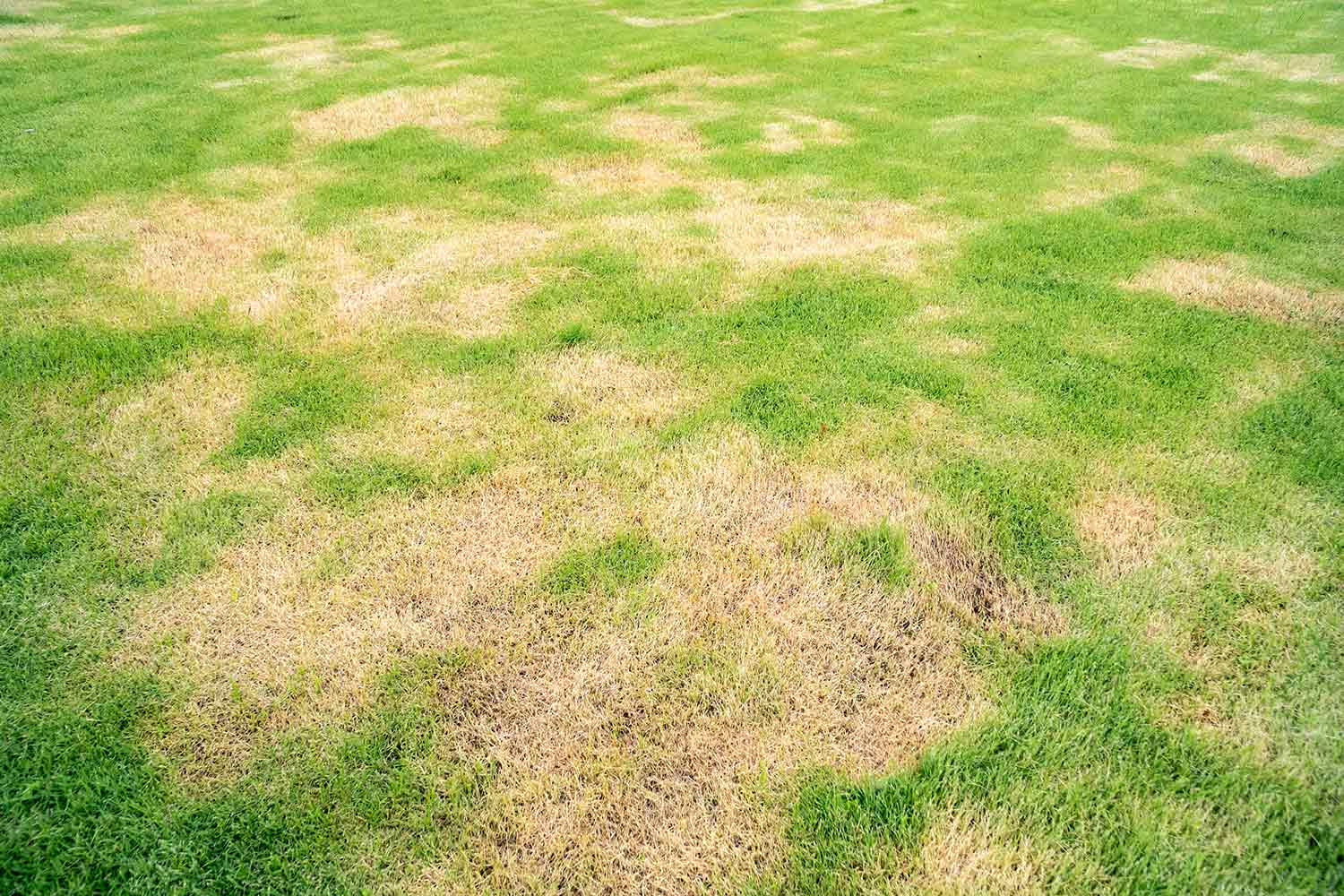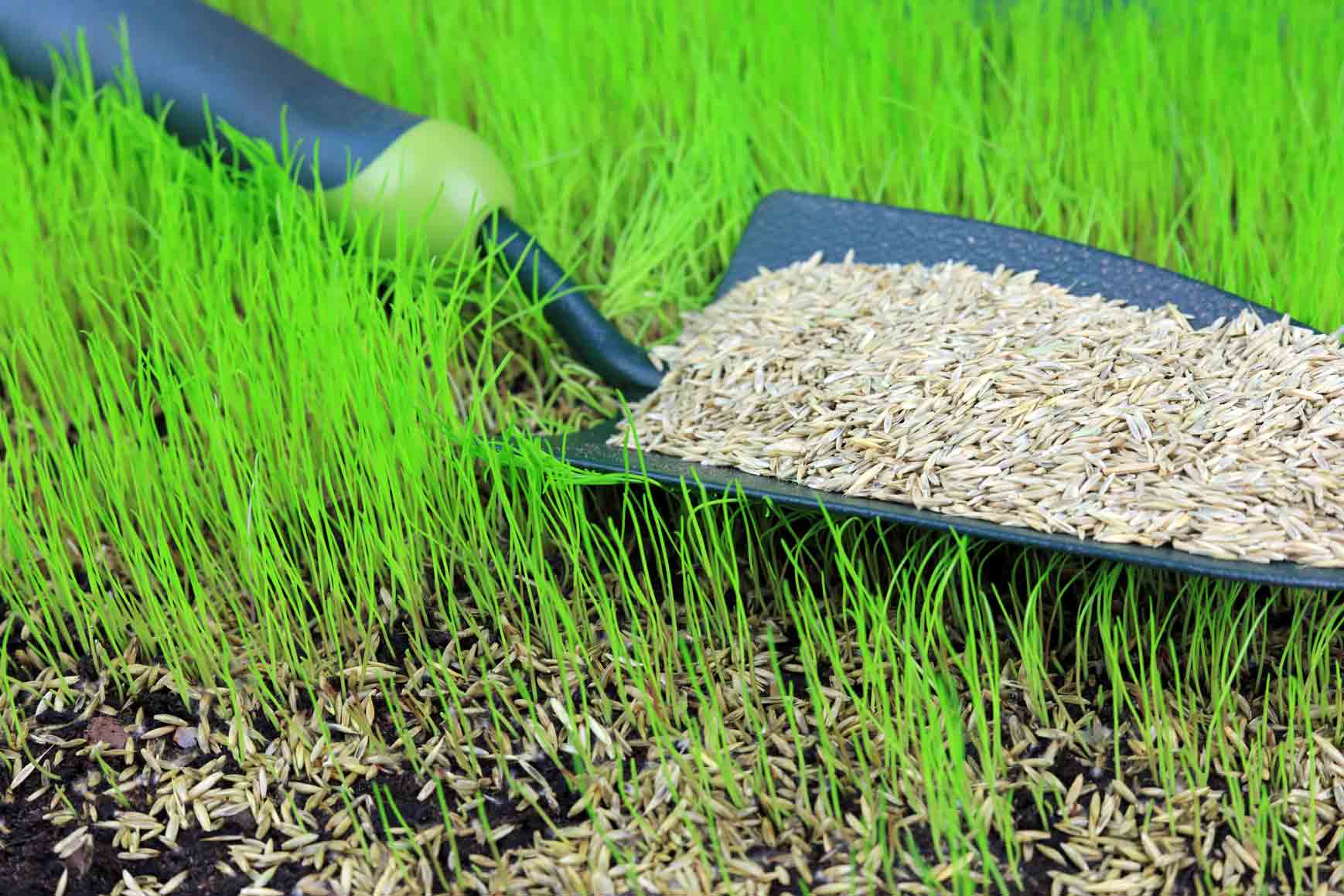Last Updated:
July 19, 2025
Between scorching summer temperatures and the challenges of drought, homeowners in Arizona must take a strategic approach to lawn care, and one of the most effective techniques is overseeding. If you want a thick, green lawn year-round, understanding the right timing and methods for overseeding in Arizona is crucial.
Come learn more about the benefits of overseeding your lawn at the right time!

Overseeding is the process of spreading grass seed directly over an existing lawn without tearing up the turf or soil. It’s a proactive method to thicken up patchy areas, enhance color, and introduce more resilient grass varieties to your landscape. Rather than starting from scratch, overseeding blends new growth into your existing lawn to rejuvenate its appearance and health.
This practice is especially important in regions like Arizona, where turfgrasses are exposed to intense heat, dry air, and extended sunlight. Overseeding helps reinforce the lawn’s durability, making it better equipped to handle environmental stress.
Overseeding is not the same as reseeding a bare or dead lawn. While reseeding typically refers to starting fresh in areas where grass has been lost entirely, overseeding focuses on supplementing and strengthening what’s already there.

Without overseeding, Arizona lawns made up of bermudagrass or other warm-season turf types often appear brown and lifeless from late fall through early spring, when these grass types go dormant. Overseeding ensures a consistent, aesthetically pleasing appearance during the entire year.
Arizona homeowners often overseed their warm-season lawns with cool-season ryegrass in the fall to maintain a green lawn during winter. This seasonal transition keeps lawns looking healthy and appealing year-round, while also protecting the soil and reducing weed growth during the cooler months.
Key Benefits of Overseeding in Arizona:

Unlike other regions where overseeding is usually done in the spring or early fall, the optimal time to overseed in Arizona is in the fall, specifically between mid-September and mid-October. This timing aligns with the seasonal transition when bermudagrass begins to go dormant due to cooler nighttime temperatures.
Attempting to overseed in spring or summer is generally ineffective in Arizona. Ryegrass will struggle to establish under the intense heat, and warm-season grasses are already growing aggressively, creating too much competition. Spring also brings unpredictable cold snaps and dry spells that can make seed germination unreliable.
Benefits of Overseeding in Fall:

In Arizona’s desert regions, perennial ryegrass is the top choice for fall overseeding. It’s quick to germinate, grows well in cooler temperatures, and offers a rich, dark green color that contrasts beautifully with dormant warm-season grass.
Perennial ryegrass is not meant to replace bermudagrass but rather to coexist with it seasonally. Once spring returns and temperatures rise, the ryegrass will naturally begin to fade, allowing bermudagrass to regain dominance.

If your lawn has bare spots or areas where the turf looks weak or thin, it’s a clear sign that overseeding is necessary. A dense lawn not only looks better but also blocks out weeds and helps retain soil moisture.
Sparse turf provides an open invitation for weeds like spurge, crabgrass, and nutsedge. Overseeding thickens the lawn canopy, making it harder for weed seeds to germinate and spread.
If parts of your lawn remain pale green or brown even during ideal growing conditions, it may indicate underlying soil issues, poor turf health, or nutrient deficiencies. Overseeding with resilient grass seed can help bring color uniformity back.
Lawns that see heavy use can develop compacted areas and wear spots. Overseeding fills in these problem zones and strengthens the turf for future foot traffic.
Even healthy grass varieties become less vigorous over time. If your lawn is several years old and doesn’t bounce back like it used to, overseeding can introduce fresh, high-performance varieties for better resilience.

Especially in Arizona’s arid climate, where moisture retention and temperature control are key, every step of the process must be done with intention. From soil preparation to watering schedules, overseeding demands consistency and attention to detail. When done correctly, it produces a healthy, uniform lawn that not only looks better but is also more resilient to weeds, foot traffic, and seasonal temperature shifts.
Following these steps maximizes your overseeding investment and ensures your lawn thrives through Arizona’s mild winters and transitions smoothly back to warm-season growth in spring. For more help and information on how to overseed your Arizona lawn properly, call Little John’s Lawns today!